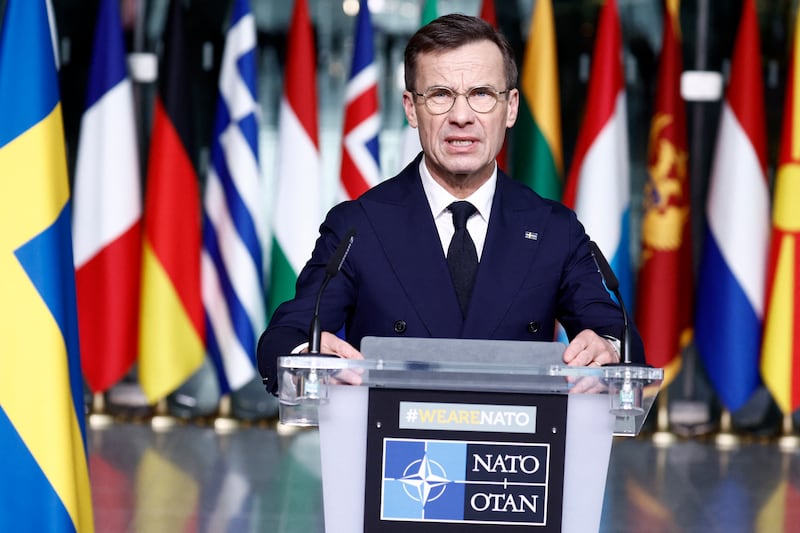As Sweden’s flag was raised over a rained-out Nato headquarters in Brussels for the first time on Monday, a leading peace research institute in Stockholm warned of a new arms race in Europe.
Swedish prime minister Ulf Kristersson said his country felt “humble ... but also proud” at the step to end two centuries of non-alignment and neutrality in the face of Russia’s invasion of Ukraine.
“We know the expectations for Sweden are high, but we also have high expectations for ourselves,” said Mr Kristersson. “We will share burdens, responsibilities and risks with our allies.”
A sure sign of growing risks in Europe, according to the Stockholm International Peace Research Institute (Sipri), is how Europe has almost doubled (94 per cent) its arms imports in the last decade.
Turkey’s Erdogan makes risky bet on peace with Kurds
‘We’ll rest when we win’: No let-up for Ukraine’s medics and rescue teams as war with Russia grinds on
Trump-Starmer summit: British PM produces masterstroke of political theatre as he seeks to cement bromance
The sap rises and barriers go up as China prepares for the year’s biggest political event
US arms firms were behind 55 per cent of the sales spike in Europe, according to the study, while Russian exports have plummeted in the same time.

“The USA has increased its global role as an arms supplier – an important aspect of its foreign policy – exporting more arms to more countries than it has ever done in the past,’ said Mathew George, director of Sipri’s Arms Transfer Programme.
France has overtaken Russia to become the world’s second leading supplier of arms. Made-in-Russia exports have slipped by 53 per cent globally in the last five years, the study suggests, with Moscow’s list of customer states dropping from 31 in 2019 to 12 in 2023.
Despite the slump, Sipri says Russia remains the world’s third-largest arms exporter. Moscow relies primarily on its own industry for major arms but, in 2022-2023, it imported flying bombs from Iran and ballistic missiles from North Korea. The latter, Sipri noted, was “in violation of a United Nations arms embargo on North Korea”.
Ukraine, as it pushes back against a Russian invasion, has emerged as the largest European arms importer in the study period 2019–23 after receiving military equipment from more than 30 states since February 2022.
The US has supplied 29 per cent of Ukraine’s arms imports, according to the Sipri study, followed by Germany (14 per cent) and Poland (13 per cent).
Despite a wartime boom – and bulging order books at its arms companies – German arms exports dropped by 14 per cent over the last five years, according to Sipri, to finish in fifth place.
In stark contrast, France’s arms exports increased by 47 per cent in the last decade as big combat aircraft deals with India, Qatar and Egypt have seen Asia business surge to 42 per cent of sales and 34 per cent of sales go to the Middle East.
“France is using the opportunity of strong global demand to boost its arms industry through exports,” said Katarina Djokic, researcher at Sipri. “France has been particularly successful in selling its combat aircraft outside Europe.”
In Israel, the US supplied 69 per cent of weapons, while 30 per cent of imports were sourced from Germany.
- Listen to our Inside Politics Podcast for the latest analysis and chat
- Sign up for push alerts and have the best news, analysis and comment delivered directly to your phone
- Find The Irish Times on WhatsApp and stay up to date














